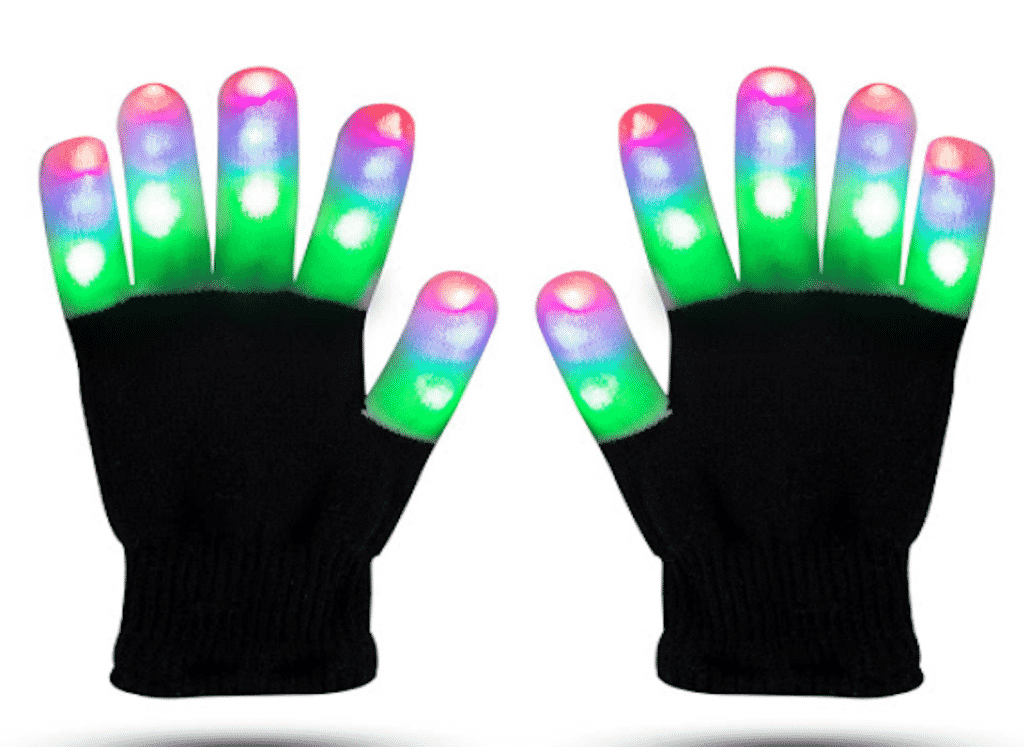Professional glovers can make the act of performing a laser light show look seamless and natural. And while many modern LED gloves offer spectacular performance for beginners who don’t have an ounce of training, that just means the bar for wowing the audience is higher than it’s ever been.
You won’t become a pro with rave gloves overnight, but it’s never too early to get started with the fundamentals and learn a little bit about more advanced techniques. If you really want to impress with your gloving at the next rave you attend, here are the tips you should follow.
Moves to Start With
There are a few moves that every glover should know. These typically form the basis for more complex moves — and even more, experienced glovers will incorporate these moves into their repertoire. While they may seem basic and boring compared to more advanced gestures, they continue to serve as bread and butter moves even in more complex light shows.
- Finger rolls are simple in theory but can challenge your sense of rhythm and develop good habits that can be applied to dancing and more advanced gloving techniques. Similar to the Wave performed in baseball stadiums, finger rolls extend from one hand to the other and can be continued indefinitely.
- Flails are performed by rotating at the wrist or elbow without moving your hands in the process. The result is a series of light spirals that can add a whole lot of dimension when used with finger rolls and other techniques. More complex flails can lead to significantly more sophisticated shapes and patterns.
- Figure 8s are self-explanatory. Your fingers move in an infinity sign, and they can be used to transition smoothly from one move to another. Figure eights have a fluid sense of form, and experts can seamlessly shift from forward to reverse figure 8s or adjust their shape and size to match the music.
Understanding the Fundamentals
Gloving is quite similar to dancing, and coming from a dance background will help you perform better. But even amateurs can pick up the fundamentals pretty quickly. These are the factors to consider whenever you’re gloving for a crowd, or for practice.
- Complex performance means picturing a grid. You can think of this grid as your stage. As you become more advanced with your gloving techniques, you’ll begin to naturally associated your hand movements with their place on the stage as seen by the crowd.
- Light shows are designed to complement the music, and that means that some level of rhythm is key. How well your light show syncs up to the music is about your flow, but it’s also about the configuration of colors and patterns you use. Good rhythm can go a long way, but good planning is necessary too.
- Great glovers can find the balance between speed and cleanness. The former is impressive only insofar as it maintains the latter. Being able to flail your arms wildly doesn’t require much skill. Doing it with precision is another case altogether.
- Finally, a glover needs to be good at handling transitions. As longer sets flow from one song to another, the ability to shift on the fly is integral. A good glover will work on their transitions independently, and they can make the shift from one set of moves to another look like a smooth action rather than an act of improvisation of rhythmic necessity.
Getting successful with LED gloves requires practice. Because while there are countless gloves out there that come with a wide variety of different shapes, colors, and features, they can’t operate on their own. But use these tips as a starting point and you can become a master of LED gloves in no time at all.
